
What is sentiment analysis?
Sentiment analysis is the process of examining text to discern expressed emotions, determining whether sentiment is positive, negative, or neutral.
It gauges opinions, attitudes, and feelings towards specific topics, products, or services, aiding decision-making and public perception understanding.
How does sentiment analysis algorithms work?
Sentiment analysis algorithms leverage natural language processing (NLP) to recognize patterns and emotions within extensive text datasets, employing AI models to facilitate their application in marketing strategies, customer feedback analysis, social media monitoring, and reputation management.
You can instantly use our sentiment analysis tool to test our sentiment analysis algorithm.
Which AI models does sentiment analysis use?
Many new models are available every day, and the best model for sentiment analysis often depends on the specific task and dataset, but popular choices include deep learning models like BERT, LSTM, and Transformer-based architectures such as GPT (Generative Pre-trained Transformer) models.
What is the history of sentiment analysis?
Sentiment analysis traces its roots back to the early 2000s when researchers began exploring methods to automatically classify opinions in text.
Initially focusing on simple polarity classification, advancements in machine learning and natural language processing have refined sentiment analysis techniques.
With the rise of social media platforms, sentiment analysis gained traction for monitoring public opinion and sentiment towards brands, products, and events.
How did sentiment analysis techniques evolve?
Over time, sentiment analysis techniques have evolved from rule-based systems to more data-driven approaches, such as machine learning algorithms.
Early methods relied on predefined patterns and lexicons, while modern techniques, like deep learning and neural networks, can learn complex language nuances for improved accuracy.
Moreover, sentiment analysis now integrates multimodal data sources, such as text, images, and audio, to capture diverse sentiments across platforms.
Here's our article about sentiment analysis in voice call, if you want to know more.
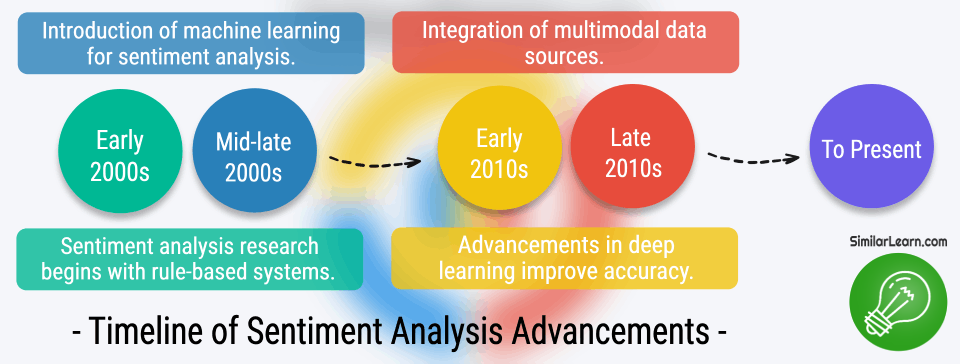
Sentiment analysis can be considered a qualitative process, interpreting emotions and opinions from text data, but it often involves quantitative techniques to measure and analyze sentiment scores numerically.
What is the Importance of sentiment analysis in marketing?
Sentiment analysis is used in marketing strategies for those five key reasons:
- Sentiment analysis provides insights into customer opinions, preferences, and satisfaction levels.
- Marketers can understand public perception of their brand and products, by analyzing sentiments expressed in social media, reviews, and other sources.
- Marketers can tailor marketing campaigns, products, and services to better meet customer needs and preferences.
- Sentiment analysis helps in identifying potential issues or crises early on, allowing marketers to address them promptly and maintain brand reputation.
- Sentiment analysis empowers marketers with valuable insights for effective decision-making and strategy formulation.
You can visit our sentiment analysis marketing page to learn using sentiment analysis in marketing.
Can ChatGPT do sentiment analysis?
Yes, he can perform sentiment analysis to some extent, analyzing text and offering insights into expressed sentiment, though his accuracy may not match specialized sentiment analysis tools.
Our sentiment analysis tool has proven that it can outperform ChatGPT in sentiment analysis.
What is the difference between opinion-mining and sentiment-analysis?
Opinion mining focuses on extracting opinions from text, while Sentiment analysis specializes in understanding the conveyed emotions.
Opinion mining and sentiment analysis both deal with evaluating people's opinions, but they differ in their focus.
While opinion mining identifies subjective expressions, sentiment analysis goes further, discerning the positive, negative, or neutral sentiments expressed.
Essentially, opinion mining detects opinions, whereas sentiment analysis interprets the underlying emotions, providing a deeper understanding of textual content.
What is the difference between mood-analysis and sentiment-analysis?
Mood analysis and sentiment analysis are distinct in their focus and approach; sentiment analysis evaluates emotions expressed in text, aiming to determine positivity or negativity, while mood analysis delves deeper into the overall emotional state, considering factors like tone and context.
In practice, sentiment analysis is employed by companies to gauge customer satisfaction through analyzing online reviews, while mood analysis is utilized in mental health applications to track and understand emotional fluctuations based on user input.
Is there more that 3 types of Sentiment Analysis?
Actually, there are 9 types of sentiment analysis types, and here they are:
- Document-level sentiment analysis
- Sentence-level sentiment analysis
- Aspect-based sentiment analysis (ABSA)
- Multimodal sentiment analysis (combining text, image, audio, etc.)
- Domain-specific sentiment analysis
- Rule-based approaches
- Machine learning algorithms
- Deep learning models
- Hybrid approaches combining rule-based and machine learning techniques
1. Document-level sentiment analysis
Document-level sentiment analysis assesses the overall sentiment within a document, detecting emotions like positivity, negativity, or neutrality by analyzing phrases and co-occurring words, thus providing insight into the document's prevailing attitude or feeling.
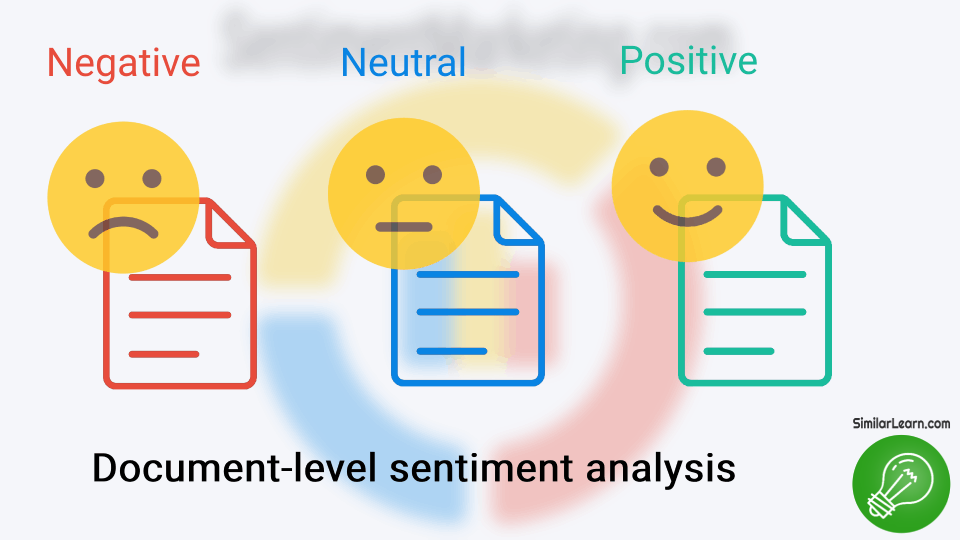
2. Sentence-level sentiment analysis
Sentence-level sentiment analysis examines the sentiment expressed in individual sentences, identifying positivity, negativity, or neutrality by analyzing phrases and word proximity, thus providing insight into the emotional tone of each sentence.
3. Aspect-based sentiment analysis (ABSA)
Aspect-based sentiment analysis (ABSA) focuses on specific aspects or features within a document, evaluating sentiments expressed towards them and identifying positive, negative, or neutral opinions by analyzing phrases and their proximity.
4. Multimodal sentiment analysis (combining text, image, audio, etc.)
Multimodal sentiment analysis combines text, images, audio, and other data forms to assess sentiment, examining emotions or opinions across different modalities and detecting positivity, negativity, or neutrality.
By analyzing co-occurring phrases and word proximity, it offers a comprehensive understanding of sentiment across multiple modes of expression, enabling nuanced interpretation in diverse contexts.
5. Domain-specific sentiment analysis
Domain-specific sentiment analysis assesses sentiment within a particular domain or industry by examining emotions or opinions expressed within related documents, identifying positivity, negativity, or neutrality.
Through analysis of phrases and word proximity, it offers insights tailored to the specific context of the domain, enabling targeted understanding within specialized fields.
6. Rule-based approaches:
Rule-based approaches in sentiment analysis involve creating sets of rules or patterns to determine the sentiment expressed in text. These rules often consist of predefined conditions or criteria for identifying positive, negative, or neutral sentiments.
This sentiment analysis approache is easy to use yourself to understand sentiment analysis further more, and we can showcase it in this example:
As a real example of Rule-based sentiment analysis, let's consider this sentence: "Despite the initial setbacks, the team persevered and achieved success."
| Word | Sentiment Score (Positive/Negative/Neutral) |
|---|---|
| Despite | Positive |
| the | Neutral |
| initial | Neutral |
| setbacks | Negative |
| the | Neutral |
| team | Neutral |
| persevered | Positive |
| and | Neutral |
| achieved | Positive |
| success | Positive |
| . | Neutral |
Based on the analysis, we have 4 positives, 1 negative, and 5 neutrals which make the overall score Positive.
7. Machine learning algorithms
Machine learning algorithms, such as Naive Bayes or Support Vector Machines, are used in sentiment analysis to learn patterns and associations from labeled training data, analyzing features extracted from text to classify sentiment.
From one perspective, Naive Bayes calculates sentiment probabilities by considering specific words in the text, while Support Vector Machines identify the optimal hyperplane to separate different sentiment classes within a high-dimensional feature space.
8. Deep learning models
Deep learning models, including Recurrent Neural Networks (RNNs), Convolutional Neural Networks (CNNs), and Transformer-based models like BERT, are employed in sentiment analysis for their ability to capture complex patterns and semantic relationships in text data.
While, RNNs process sequences of words, maintaining memory of previous words to understand context, CNNs extract features from text through convolutional layers, and transformer-based models like BERT utilize attention mechanisms to capture dependencies between words and encode context.
9. Hybrid approaches combining rule-based and machine learning techniques:
Hybrid approaches combine the strengths of rule-based and machine learning techniques in sentiment analysis to leverage predefined rules for initial sentiment classification and then use machine learning algorithms to refine the results or handle cases where rules may not be sufficient.
For example, rule-based systems can identify simple sentiment expressions, while machine learning algorithms can handle more nuanced or ambiguous language patterns, resulting in improved accuracy overall.
Check also our 11 Ways To Boost Your Marketing Strategy Using Sentiment Analysis page.
What is the role of NLP in sentiment analysis?
The role of natural language processing (NLP) in sentiment analysis techniques and methods is crucial for understanding and processing text data effectively.
NLP isn't the only way to perform sentiment analysis, as other methods like machine learning classifiers, lexicon-based approaches, and deep learning architectures have also been utilized, yet it remains the prevalent one for handling the general field due to its versatility and robustness in processing natural language data.
NLP techniques enable the extraction of meaningful features from text, such as identifying sentiment-bearing words and phrases, parsing syntactic structures, and handling semantic ambiguity.
Here's a real example of NLP sentiment analysis using Python and NLTK library:
import nltk from nltk.tokenize import word_tokenize
text = "I feel incredibly happy today!"
tokens = word_tokenize(text)
print(tokens)
# Output: ['I', 'feel', 'incredibly', 'happy', 'today', '!']
NLP tools like NLTK provide functionalities for tokenization, which breaks down the text into individual words or tokens, facilitating further analysis and classification based on sentiment.
These techniques form the foundation for sentiment analysis methods to accurately interpret and categorize the sentiment expressed in text data.
Sentiment analysis methods
Preprocessing steps (tokenization, stemming, lemmatization, etc.):
Three Preprocessing steps are essential in sentiment analysis to standardize and prepare text data for analysis:
- Tokenization divides text into individual words or tokens. For example, the sentence "The quick brown fox jumps over the lazy dog" would be tokenized into: ["The", "quick", "brown", "fox", "jumps", "over", "the", "lazy", "dog"].
- Stemming reduces words to their root forms. For instance, the word "running" would be stemmed to "run", and "cats" would be stemmed to "cat".
- Lemmatization further normalizes words to their dictionary forms. For example, the word "better" would be lemmatized to "good", and "geese" would be lemmatized to "goose".
Preprocessing steps help reduce the complexity of the text data and improve the accuracy of sentiment analysis by ensuring that similar words are treated identically, regardless of their inflections or variations.
Comparison between sentiment analysis methods
For example: "The movie was amazing, but the ending left me disappointed."
In this example, the sentence "The movie was amazing, but the ending left me disappointed." contains both positive ("amazing") and negative ("disappointed") sentiments, illustrating the complexity of sentiment analysis at the sentence level.
Here are methods used to address sentiment analysis in this case, each with its own approach:
- Polarity-Based System: Assigns scores to words (+1 for positive, 0 for neutral, -1 for negative), then sums for overall sentiment.
- Sentiment Lexicons: Pre-defined scores for words are summed to determine overall sentiment.
- Machine Learning Models: Analyze using trained data, considering word embeddings and context for sentiment prediction.
- Rule-Based Systems: Apply predefined rules to determine sentiment based on word presence (e.g., positive/negative). Result might be mixed due to conflicting words.
And here's a comparison between them:
| Method | Pros | Cons | Period Used |
|---|---|---|---|
| Polarity-Based System | Assigns clear scores to words for straightforward sentiment calculation. | Oversimplifies sentiment analysis, may miss nuances. | Continuously used since inception. |
| Sentiment Lexicons | Utilizes pre-defined scores for efficient sentiment determination. | Relies on static lexicons, may not capture evolving language nuances. | Continuous use with lexicon updates. |
| Machine Learning Models | Adaptable to various contexts, can capture complex patterns for nuanced sentiment analysis. | Requires substantial labeled data for effective training. May be computationally expensive. | Widely adopted in the last decade. |
| Rule-Based Systems | Offers transparent rule application for sentiment analysis. | Limited by rule complexity and adaptability to evolving language use. | Commonly used before ML advancements. |
What are the applications of Sentiment Analysis?
Social media monitoring
Social media monitoring involves tracking and analyzing online conversations on platforms like Twitter, Facebook, and Instagram, observing user posts, comments, and mentions to gauge public sentiment toward brands, products, or topics.
Sentiment nnalysis tools identify trends, sentiments, and influencers to inform marketing strategies and brand perception management.
For example, in Twitter sentiment analysis using Python, developers utilize various libraries such as Tweepy for accessing Twitter's API, NLTK (Natural Language Toolkit) or spaCy for text preprocessing, and sentiment analysis libraries like TextBlob or VADER.
With Python, analysts can collect tweets related to specific keywords or topics, preprocess the text data to remove noise and tokenize the text into words or phrases. Then, sentiment analysis algorithms are applied to determine the sentiment expressed in each tweet, whether positive, negative, or neutral.
By aggregating and analyzing the sentiment scores across a large number of tweets, marketers and researchers can gain insights into public opinion, identify trends, and assess the effectiveness of marketing campaigns or brand perception over time.
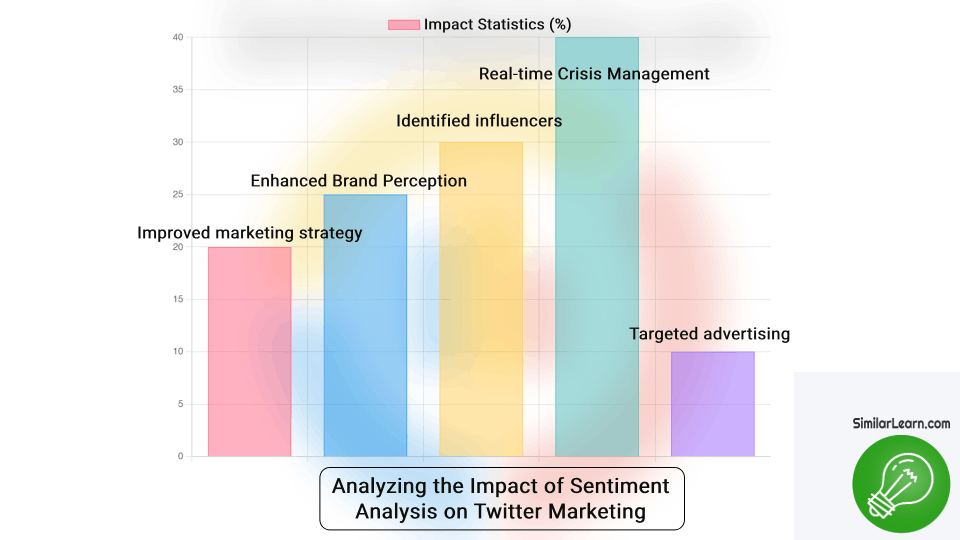
The data presented may vary between projects; however, what remains paramount is the acknowledgment of its tangible impact.
Brand monitoring and reputation management
Brand monitoring and reputation management involve tracking online discussions and feedback about a company or its products, assessing public perception to address negative sentiments and maintain a positive brand image.
Tools analyze social media, reviews, and news articles to inform strategic decisions and improve customer satisfaction.
Outlined below are the significant moments in McDonald's brand management journey, highlighting their proactive measures across social media monitoring, review management, crisis response, strategic communication, continuous improvement, and innovation.
- 2004: Introduction of Social Media Monitoring
- McDonald's begins actively monitoring social media platforms like Twitter and Facebook to track brand mentions and customer sentiment.
- 2009: Implementation of Review Management Strategy
- McDonald's establishes a dedicated team to manage online reviews on platforms such as Yelp and TripAdvisor, responding promptly to customer feedback.
- 2012: Crisis Management Response
- In response to a food safety concern, McDonald's initiates a comprehensive investigation and implements corrective measures, communicating transparently with customers and stakeholders.
- 2015: Strategic Communication Campaigns
- Based on brand monitoring data, McDonald's launches targeted marketing campaigns to address customer concerns and enhance brand perception.
- 2018: Continuous Improvement Initiatives
- McDonald's adopts a data-driven approach to reputation management, regularly analyzing feedback and performance metrics to drive continuous improvement efforts.
- 2020: Enhanced Engagement and Transparency
- McDonald's strengthens its social media presence, engaging with customers in real-time and demonstrating transparency in addressing issues and concerns.
- 2022: Ongoing Adaptation and Innovation
- McDonald's continues to evolve its brand monitoring and reputation management strategies, leveraging emerging technologies and consumer insights to stay ahead of evolving trends and challenges.
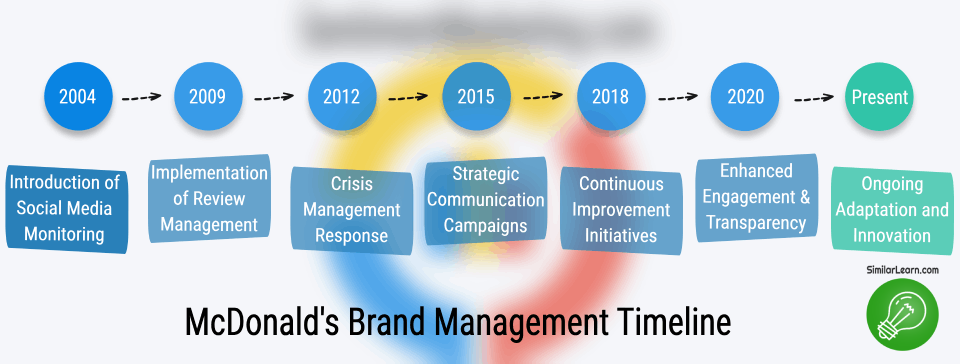
Customer feedback analysis
Customer feedback analysis examines opinions and comments from consumers about products or services, identifying patterns in feedback to understand customer satisfaction and areas for improvement.
Businesses utilize sentiment analysis tools to enhance products, services, and customer experiences based on feedback, exemplified by real cases like Starbucks using sentiment analysis to enhance its customer feedback.
Here's a table that provides a snapshot of Starbucks' customer feedback analysis over a five-year period, including overall customer satisfaction scores, sentiment analysis trends, and main areas for improvement identified through customer feedback.
| Year | Overall Customer Satisfaction Score | Sentiment Analysis Trends | Main Areas for Improvement |
|---|---|---|---|
| 2018 | 4.5/5 | Positive: 80%, Neutral: 15%, Negative: 5% | Product Quality, Service Speed, Cleanliness |
| 2019 | 4.7/5 | Positive: 85%, Neutral: 10%, Negative: 5% | Menu Variety, Staff Friendliness, Waiting Time |
| 2020 | 4.8/5 | Positive: 90%, Neutral: 8%, Negative: 2% | Sustainability Practices, Digital Ordering Experience |
| 2021 | 4.9/5 | Positive: 92%, Neutral: 6%, Negative: 2% | Mobile App Functionality, In-store Technology |
| 2022 | 4.9/5 | Positive: 93%, Neutral: 5%, Negative: 2% | Menu Innovation, Allergen Information, Community Engagement |
Sentiment Analysis for Market research and competitive analysis
Sentiment Analysis for Market research and competitive analysis examines public opinions and sentiments toward brands and competitors, helping companies understand market trends, consumer preferences, and brand perception.
By analyzing sentiments in social media, reviews, and forums, businesses gain insights to refine marketing strategies and stay competitive.
You can read more about sentiment analysis used in marketing
One real case study that exemplifies the utilization of sentiment analysis for market research and competitive analysis is the use of this technique by Coca-Cola.
Coca-Cola has employed sentiment analysis to monitor public opinions and sentiments toward its brand as well as its competitors in the beverage industry.
By analyzing social media conversations, online reviews, and forums, Coca-Cola gains valuable insights into consumer preferences, emerging trends, and competitor activities.
This data allows Coca-Cola to understand how its brand is perceived in comparison to competitors, identify areas for improvement, and refine its marketing strategies accordingly.
Social Media Mentions
| Category | Percentage |
|---|---|
| Positive | 70% |
| Neutral | 20% |
| Negative | 10% |
Online Reviews
| Category | Percentage |
|---|---|
| Positive | 80% |
| Neutral | 15% |
| Negative | 5% |
Forum Discussions
| Category | Percentage |
|---|---|
| Excitement | 60% |
| Concerns (Sugar) | 30% |
| Other | 10% |
Sentiment Analysis for Political analysis and public opinion tracking
Sentiment Analysis for Political analysis and public opinion tracking evaluates public sentiments and attitudes toward political figures, policies, and events.
It provides insights into voter preferences, public perceptions, and sentiment shifts over time.
Policymakers and political analysts use sentiment analysis to gauge public opinion and shape communication strategies.
Here are some real-world cases where sentiment analysis plays a crucial role:
- US Presidential Campaigns: Utilize sentiment analysis to gauge public opinion towards candidates and campaign messaging. Analyze social media, news, and public statements for voter insights and strategy adjustments.
- Brexit Sentiment Analysis: Track public opinion on the UK's EU exit. Analyze social media, news, and politician statements for voter sentiment and campaign strategies.
- Indian General Elections: Employ sentiment analysis for voter opinion and outcome prediction. Analyze Twitter, Facebook for insights on candidates, parties, and issues.
- European Parliament Elections: Apply sentiment analysis across member states. Analyze social media, news, and polls for voter preferences and EU perceptions.
- Local Elections: Understand grassroots sentiment with sentiment analysis. Analyze local media, social media, and community forums for voter views on candidates and policies.
Sentiment Analysis for Product reviews and recommendation systems
Sentiment Analysis for Product reviews and recommendation systems examines sentiments expressed in product reviews to assess customer satisfaction and product quality.
By helping businesses understand consumer preferences and make data-driven decisions for product development and marketing, sentiment analysis enables recommendation systems to suggest products tailored to individual preferences.
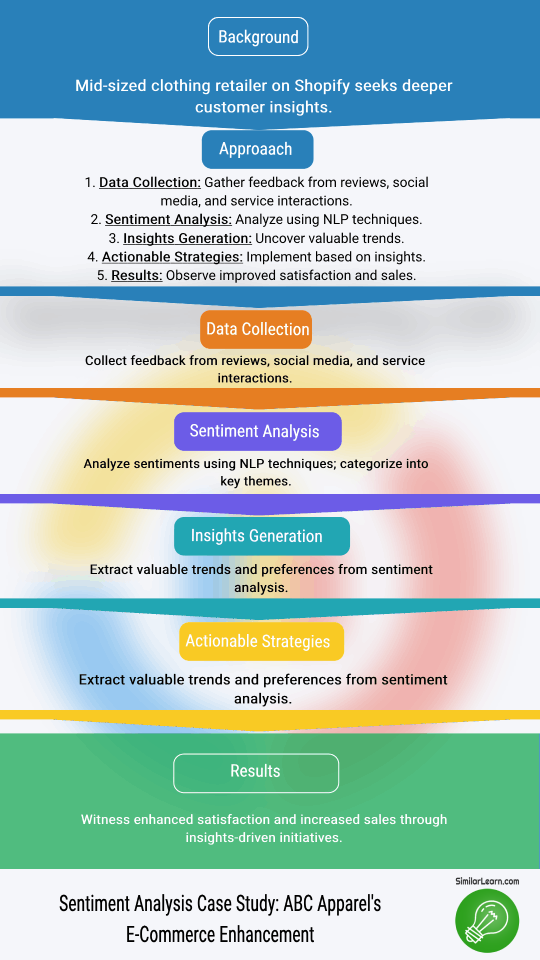
Check also our 11 Ways To Boost Your Marketing Strategy Using Sentiment Analysis page.
Sentiment-aware chatbots and virtual assistants
Sentiment-aware chatbots and virtual assistants recognize and respond to user sentiments in conversations, adapting their responses based on detected emotions to provide personalized and empathetic interactions, thus enhancing user experiences by understanding and addressing user sentiments effectively.
Here are 10 brands using sentiment-aware chatbots and virtual assistants:
- Google - Utilizes Google Assistant, adapting responses based on detected emotions.
- Amazon - Employs Alexa, adjusting responses according to user sentiments.
- Apple - Incorporates sentiment analysis into Siri, enhancing user interactions.
- Microsoft - Deploys Cortana, adjusting responses based on user emotions.
- IBM - Utilizes Watson Assistant, understanding and responding to user sentiments.
- Samsung - Integrates sentiment-aware features into Bixby for enhanced interactions.
- Facebook - Employs sentiment analysis in Messenger chatbots for personalized responses.
- Twitter - Utilizes sentiment analysis in customer service chatbots for relevant assistance.
- Zendesk - Integrates sentiment-aware capabilities in virtual assistants for empathetic responses.
- HubSpot - Incorporates sentiment analysis in chatbots for marketing and sales, improving engagement.
What are the most difficult use-cases for Sentiment Analysis?
Contextual understanding and sarcasm detection
Contextual understanding and sarcasm detection pose challenges in sentiment analysis as algorithms struggle to grasp subtle nuances and sarcasm in text, often leading to misinterpretation of sentiments.

This limitation affects the accuracy of sentiment analysis, especially in contexts where tone and context play crucial roles.
Handling negation and mixed sentiments
Handling negation and mixed sentiments presents a limitation in sentiment analysis, as algorithms may misinterpret phrases with negations, such as "not bad," leading to inaccurate sentiment classification.
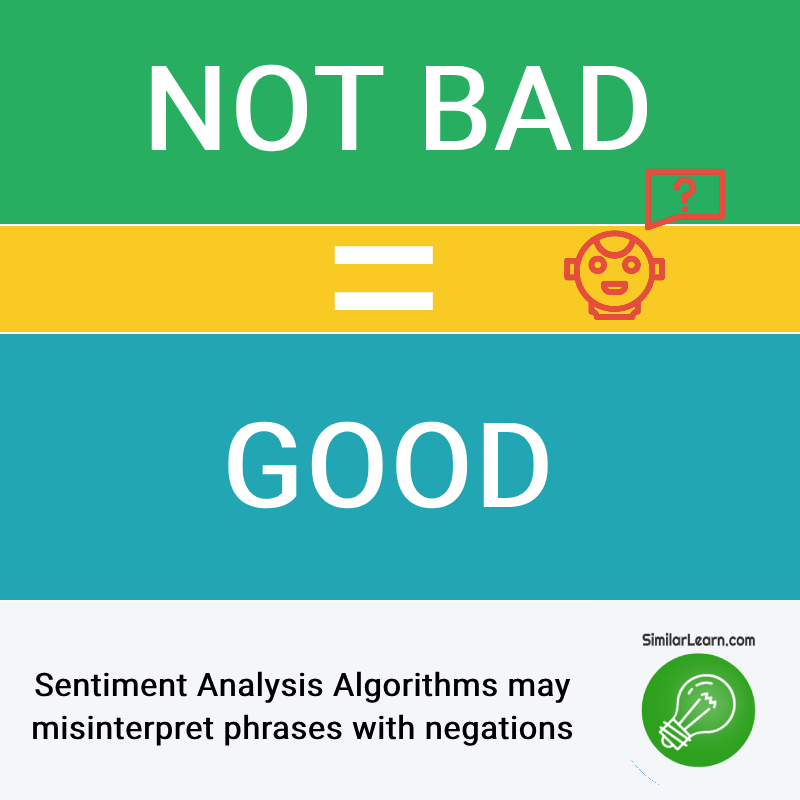
Mixed sentiments further complicate analysis, as algorithms may struggle to discern overall sentiment from conflicting expressions.
Domain adaptation and transfer learning
Domain adaptation and transfer learning pose limitations in sentiment analysis, as algorithms trained on one domain may not generalize well to other domains, resulting in reduced accuracy.
This limitation hampers sentiment analysis effectiveness, especially when analyzing sentiments in diverse or new domains.
Bias and ethical considerations
Bias and ethical considerations are significant limitations in sentiment analysis, as algorithms may inherit biases from training data, potentially resulting in unfair or inaccurate sentiment analysis results.
Ethical concerns arise regarding the potential impact of biased sentiment analysis on decision-making and public perception.
Language and cultural nuances
Language and cultural nuances present challenges in sentiment analysis, as algorithms may struggle to understand idiomatic expressions, linguistic variations, and cultural contexts, leading to misinterpretation of sentiments, thus hindering the effectiveness of sentiment analysis in diverse linguistic and cultural settings.
Dealing with noisy data and outliers
Dealing with noisy data and outliers is a limitation in sentiment analysis as they can skew sentiment analysis results, leading to inaccuracies; thus, effective handling of noisy data and outliers is essential to ensure reliable sentiment analysis outcomes.
What type of tools for sentiment analysis?
Open-source libraries (NLTK, spaCy, TextBlob, VADER, etc.)
Open-source libraries like NLTK, spaCy, TextBlob, and VADER provide accessible tools for sentiment analysis, offering pre-built functions and models for text processing, sentiment classification, and emotion detection.
With extensive documentation and community support, they enable developers to implement sentiment analysis solutions efficiently and cost-effectively.
Commercial sentiment analysis APIs (Google Cloud Natural Language API, IBM Watson Tone Analyzer, etc.)
Commercial sentiment analysis APIs such as Google Cloud Natural Language API and IBM Watson Tone Analyzer offer advanced sentiment analysis capabilities, providing scalable and reliable solutions for businesses to analyze large volumes of text data.
With features like sentiment scoring, entity recognition, and emotion detection, these APIs streamline sentiment analysis tasks for organizations.
Custom-built solutions and platforms
Custom-built solutions and platforms cater to specific business requirements in sentiment analysis, with companies developing tailored sentiment analysis systems using programming languages like Python and frameworks such as TensorFlow or PyTorch.
These solutions integrate with existing workflows and databases, offering flexibility and customization options to address unique business needs effectively.
Visualization tools for sentiment analysis results
Visualization tools for sentiment analysis results enable users to visualize sentiment trends and insights effectively, offering intuitive interfaces and graphical representations, such as charts, graphs, and heatmaps, to present sentiment analysis findings visually.
These tools enhance data interpretation and decision-making by providing clear and actionable sentiment analysis results.
What are Future Trends and Directions of sentiment analysis?
Advancements in deep learning architectures
Advancements in deep learning architectures will shape the future of sentiment analysis, as new architectures like Transformers and BERT improve the understanding of context and semantics in text.
These advancements enhance sentiment analysis accuracy and enable better interpretation of complex language structures.
Integration with other AI technologies (such as emotion recognition)
Integration with other AI technologies, such as emotion recognition, will drive future advancements in sentiment analysis, as combined with sentiment analysis, emotion recognition enhances the understanding of human emotions and attitudes.
This integration enables more nuanced analysis, leading to improved insights and decision-making in various applications.
Real-time sentiment analysis
Real-time sentiment analysis is a future trend in sentiment analysis, as advances in technology enable the analysis of sentiments in real-time data streams.
This capability allows businesses to respond promptly to changing sentiments and trends, enhancing customer satisfaction and market responsiveness.
Personalized sentiment analysis
Personalized sentiment analysis is a future direction for sentiment analysis, involving tailoring sentiment analysis models to individual preferences and characteristics.
This approach improves the accuracy of sentiment analysis by considering the unique contexts and backgrounds of users, leading to more personalized and relevant insights.
Ethical guidelines and regulations
Ethical guidelines and regulations will play a crucial role in shaping the future of sentiment analysis, as sentiment analysis becomes more widespread, ethical considerations regarding data privacy, bias, and transparency become paramount.
Establishing clear guidelines and regulations ensures responsible and ethical use of sentiment analysis technologies.
Sentiment analysis in emerging fields (healthcare, finance, etc.)
Sentiment analysis in emerging fields like healthcare and finance is a future trend, as applying sentiment analysis in these domains helps understand patient satisfaction, market trends, and investor sentiments, facilitating informed decision-making and improving services in these critical sectors.
Frequently asked questions
FAQ
What are the three known types of sentiment analysis?
Sentiment analysis is typically categorized into three popular types:
- Document-level sentiment analysis
- Sentence-level sentiment analysis
- Aspect-based sentiment analysis
Can ChatGPT do sentiment analysis?
ChatGPT can perform sentiment analysis by analyzing text for emotional tone and identifying whether it's positive, negative, or neutral, using its understanding of language and context to interpret sentiments expressed in the text.
How to easily implement sentiment analysis for my clients?
Implementing sentiment analysis for clients can be done by integrating pre-trained sentiment analysis APIs or libraries into their existing systems, with services like Google Cloud Natural Language API or sentiment analysis packages in Python being easily integrated for quick analysis.
What kind of data can an institution gather from sentiment analysis to improve customer experience?
The data that an institution can gather from sentiment analysis to improve customer experience includes:
- Customer feedback from surveys and reviews
- Social media interactions and mentions
- Product reviews and ratings
How can sentiment analysis be used to improve customer experience?
Sentiment analysis helps companies understand customer feedback, allowing them to address issues promptly and enhance products or services, while also enabling them to tailor their offerings to meet customer expectations by analyzing sentiments expressed in reviews and social media.
What is the most accurate explanation of sentiment analysis?
Sentiment analysis is the process of analyzing text to determine the emotional tone conveyed, involving identifying whether the expressed sentiment is positive, negative, or neutral, providing insights into people's opinions and attitudes towards a particular subject.
What type of information do companies analyze when conducting sentiment analysis?
Companies analyze various forms of text data, including customer reviews, social media posts, surveys, and feedback emails, examining language patterns, keywords, and context to understand customer sentiments towards their products or services.
What do voice of the market (VOM) applications of sentiment analysis do?
Voice of the Market (VOM) applications analyze large volumes of text data to identify trends, opinions, and sentiments within the market, helping companies make informed decisions by providing insights into customer preferences, industry trends, and competitive landscapes.
How do you get sentiment scores?
Sentiment scores are obtained by examining words in a text to determine whether they convey positive, negative, or neutral emotions through various methods such as machine learning algorithms or lexicon-based approaches.
Why is sentiment analysis hard?
Sentiment analysis poses challenges because words can carry diverse connotations depending on their context, making it difficult for algorithms to accurately interpret the sentiment behind them.
What is the simplest sentiment analysis?
The simplest form of sentiment analysis involves categorizing words in a text as either positive or negative based on predefined lists or rules without considering more complex linguistic nuances.
Check also our 11 Ways To Boost Your Marketing Strategy Using Sentiment Analysis page.